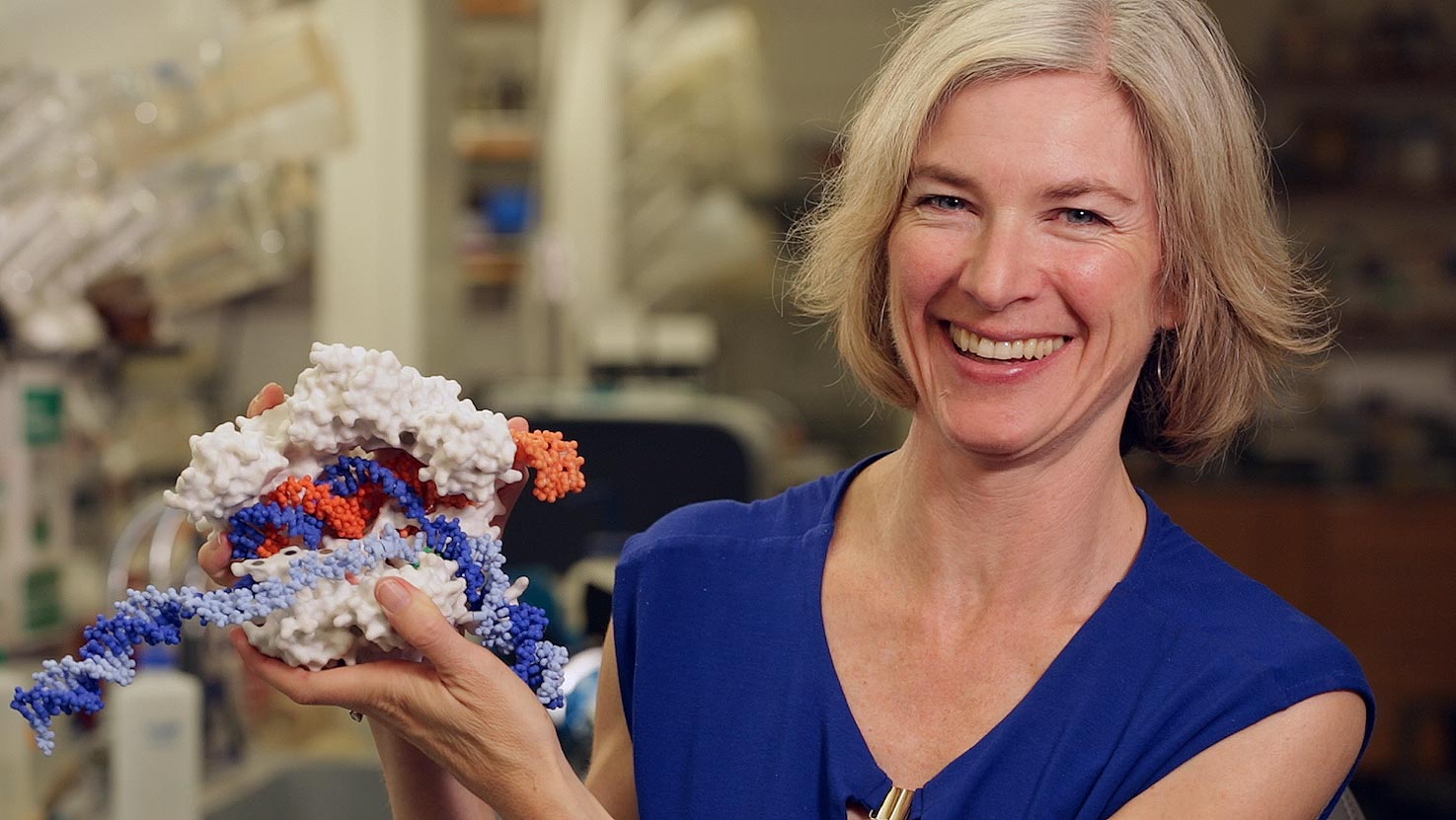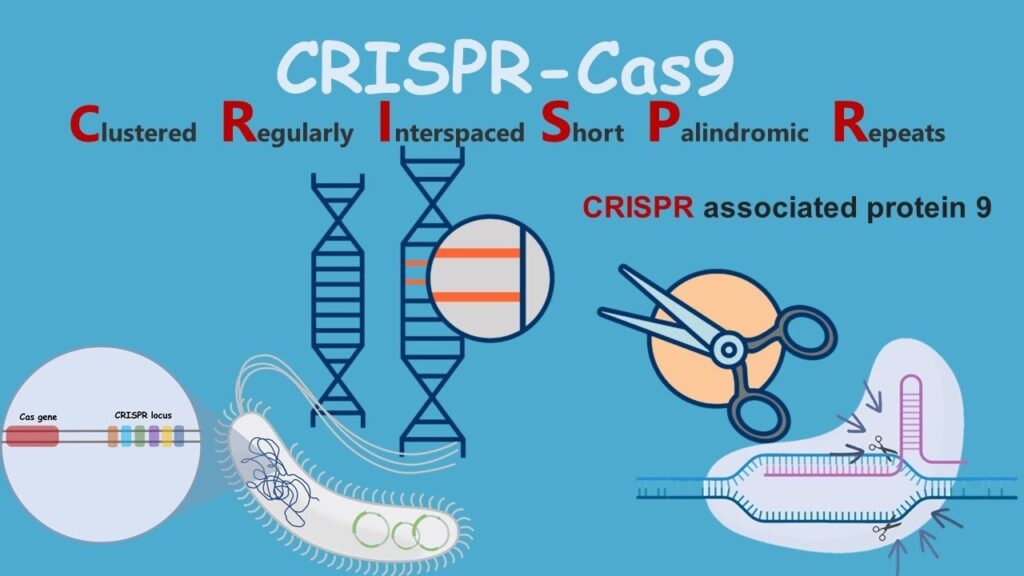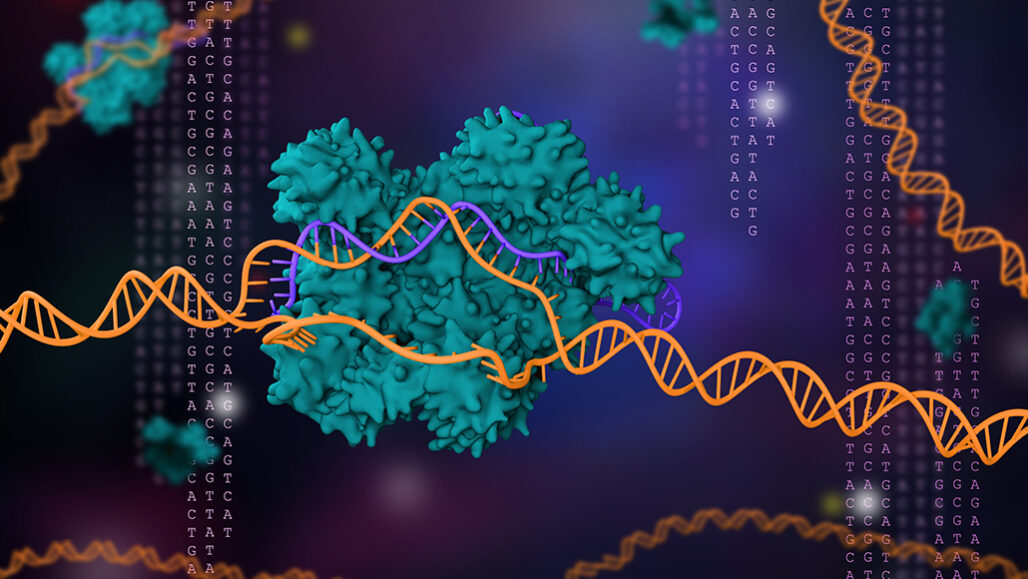CRISPR / Cas9 A Manifold Tool For Genome Editing

Emmanuelle Charpentier on CRISPRCas9, Umeå University, Sweden YouTube
Emmanuelle Charpentier (born December 11, 1968, Juvisy-sur-Orge, France) French scientist who discovered, with American biochemist Jennifer Doudna, a molecular tool known as clustered regularly interspaced short palindromic repeats (CRISPR)-Cas9.

Nanoclews para la entrega eficiente del CRISPRCas9 para la edición del genoma
Emmanuelle Charpentier and Jennifer Doudna are awarded the Nobel Prize in Chemistry 2020 for discovering one of gene technology's sharpest tools: the CRISPR/Cas9 genetic scissors. Researchers can use these to change the DNA of animals, plants and microorganisms with extremely high precision.

CRISPR/Cas9 Emmanuelle Charpentier and Jennifer Doudna Awarded Nobel Prize in Chemistry
The field of CRISPR-Cas biology and engineering continues to grow at a rapid pace, with exciting new developments emerging almost weekly. For her and her team's contribution to the discovery of CRISPR-Cas9, Emmanuelle has received numerous honors, decorations, prizes, awards and honorary doctorates in Europe, Asia and North America.

CRISPR / Cas9 A Manifold Tool For Genome Editing
Cas 9 is a special protein that cuts double-stranded DNA. When the bacterium cuts the viral DNA, the virus is inactivated and can no longer affect the bacterium. Doudna, Charpentier, and their colleagues uncovered those mechanisms in their experiments.

Figure CRISPRHacking the biological hard drive Source Emmanuelle... Download Scientific Diagram
Emmanuelle Charpentier and Jennifer A. Doudna have discovered one of gene technology's sharpest tools: the CRISPR/Cas9 genetic scissors. Using these, researchers can change the DNA of animals, plants and microorganisms with extremely high precision.

Nobel Prizes 2020 CRISPRCas9, Emmanuelle Charpentier and Jennifer Doudna by Oxford Academic
The CRISPR-associated protein Cas9 is an endonuclease that uses a guide sequence within an RNA duplex, tracrRNA:crRNA, to form base pairs with DNA target sequences, enabling Cas9 to introduce a site-specific double-strand break in the DNA.

Jennifer Doudna and Emmanuelle Charpentier Behind the Development of CRISPR Genome Editing
Currently, CRISPR-Cas9 and related technologies have been successfully used to cure life-threatening diseases, make coronavirus detection tests, and even to modify human embryo cells with the consequent birth of babies carrying the introduced modifications.

CRISPRCas9 nedir? Nasıl çalışır? Üsküdar Üniversitesi
For the first time in history a Nobel prize was awarded to two women, Emmanuelle Charpentier and Jennifer Doudna, who made key discoveries in the field of DNA manipulation with the CRISPR-Cas9 system, so-called "genetic scissors".. Currently, CRISPR-Cas9 and related technologies have been successfully used to cure life-threatening.

CRISPRCas9 Genome Engineering Technology Inventor Prof Emmanuelle Charpentier Explores New
The institutions of the three scientists are locked in a fierce patent battle over who deserves the intellectual property rights to CRISPR's discovery, which some estimate could be worth billions of dollars. "The ability to cut DNA where you want has revolutionized the life sciences. The genetic scissors were discovered 8 years ago, but have.

Nobel de Química 2020 Emmanuelle Charpentier y Jennifer Doudna por el método CRISPR / Cas 9
In a landmark 2012 paper in Science 1, the duo isolated the components of the CRISPR-Cas9 system, adapted them to function in the test tube and showed that the system could be programmed to cut.

CRISPRCas9 Gene editing tool Introduction, Principles, Uses & Applications
Emmanuelle Charpentier and Jennifer Doudna are the first two women to share the prize, which honours their work on the technology of genome editing. Their discovery, known as Crispr-Cas9 "genetic.

Emmanuelle Charpentier on CRISPR/Cas9 YouTube
Emmanuelle's seminal research unveiled the key mechanisms of the CRISPR-Cas9 technology, laying the foundation for the use of CRISPR-Cas9 as a versatile and precise gene-editing tool. In 2020, Emmanuelle was awarded the Nobel Prize in Chemistry for this scientific breakthrough.

CRISPR/Cas9 edición de adn y tratamiento de enfermedades Blog Mendelics
This year's Nobel Prize in Chemistry was awarded for the discovery of the CRISPR/Cas9 gene editing system, which has—for the first time—enabled scientists to make precise changes in the long.

CRISPR/Cas9 Emmanuelle Charpentier and Jennifer Doudna Awarded Nobel Prize in Chemistry
CRISPR is cheaper, faster, and easier to use than previous gene-editing tools. Academic labs quickly adopted the technique. Today, scientists can order Cas9 and custom guide RNAs at the click of a button. CRISPR opened up gene editing to the masses.

CRISPRcas9 Emmanuelle Charpentier YouTube
Emmanuelle Charpentier: a key inventor of the gene-editing technology CRISPR-Cas9. Credit: Peter Steffen/DPA/PA Emmanuelle Charpentier's office is bare, save for her computer.

2020 chemistry Nobel goes for CRISPR, the geneediting tool Science News for Students
CRISPR-Cas9 wins Nobel Paulina Strzyz Nature Reviews Molecular Cell Biology 21 , 714 ( 2020) Cite this article 3006 Accesses 15 Citations 5 Altmetric Metrics The ability to precisely edit.